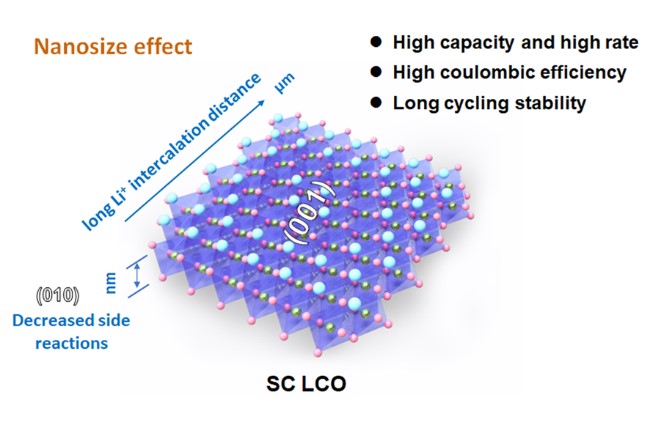F.F. Xing, S.H. Liao, J.Q. Qin, G.R. Wang, S.H. Zheng and Z.-S. Wu*
ACS Energy Letters, 2024, 9.
DOI: 10.1021/acsenergylett.3c02196 [PDF]

The nanosize effect in nanostructured electrode materials is significant for boosting rate performance, however, it brings about low capacity, low coulombic efficiency and poor stability. In this work, 2D atomically thin (001)-oriented single-crystalline LCO (SC-LCO) nanosheets with longer Li+ intercalation distance and (001) planes dominated surface are constructed to regulate the nanosize effect. The SC-LCO not only own large plateau region capacity even at high rate (194 mAh g-1 at 1C and 111 mAh g-1 at 50C) but also realize remarkable improvement in the initial coulombic efficiency (92% at 1C) and cycling stability (83% capacity retention for 500 cycles). The battery-supercapacitor hybrid devices (BSHDs) assembled with kinetics and capacity doubly matched SC-LCO and mesoporous TiNb2O7 nanosheets offer high energy density (244 Wh kg-1 @ 693 W kg-1) and power density (15 kW kg-1 @ 151 Wh kg-1). Further, pouch-type full cells are assembled, demonstrating the enormous applicability of this strategy.
